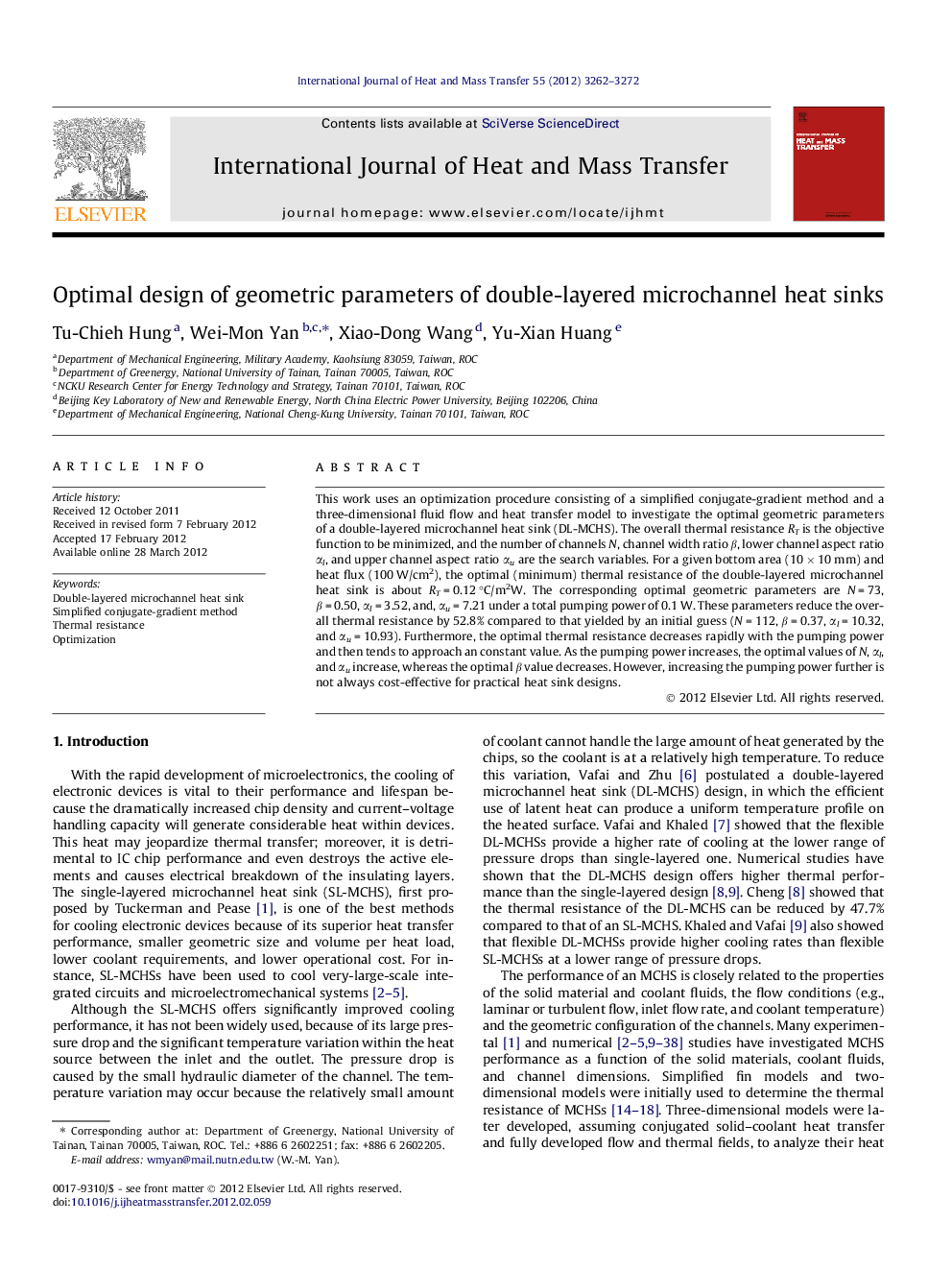| Article ID | Journal | Published Year | Pages | File Type |
|---|---|---|---|---|
| 659505 | International Journal of Heat and Mass Transfer | 2012 | 11 Pages |
Abstract
This work uses an optimization procedure consisting of a simplified conjugate-gradient method and a three-dimensional fluid flow and heat transfer model to investigate the optimal geometric parameters of a double-layered microchannel heat sink (DL-MCHS). The overall thermal resistance RT is the objective function to be minimized, and the number of channels N, channel width ratio β, lower channel aspect ratio αl, and upper channel aspect ratio αu are the search variables. For a given bottom area (10 Ã 10 mm) and heat flux (100 W/cm2), the optimal (minimum) thermal resistance of the double-layered microchannel heat sink is about RT = 0.12 °C/m2W. The corresponding optimal geometric parameters are N = 73, β = 0.50, αl = 3.52, and, αu = 7.21 under a total pumping power of 0.1 W. These parameters reduce the overall thermal resistance by 52.8% compared to that yielded by an initial guess (N = 112, β = 0.37, αl = 10.32, and αu = 10.93). Furthermore, the optimal thermal resistance decreases rapidly with the pumping power and then tends to approach an constant value. As the pumping power increases, the optimal values of N, αl, and αu increase, whereas the optimal β value decreases. However, increasing the pumping power further is not always cost-effective for practical heat sink designs.
Related Topics
Physical Sciences and Engineering
Chemical Engineering
Fluid Flow and Transfer Processes
Authors
Tu-Chieh Hung, Wei-Mon Yan, Xiao-Dong Wang, Yu-Xian Huang,
